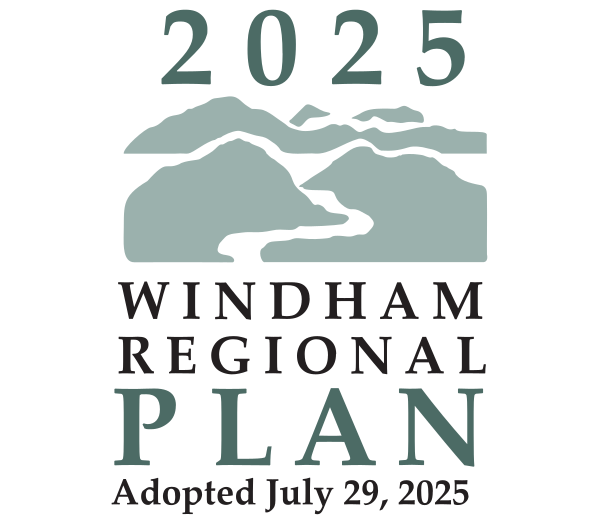Housing
HOUSING AFFORDABILITY
Housing affordability refers to the ability of all residents within a community to find housing that matches their level of income. Traditionally, housing is considered affordable when a household spends no more than 30 percent of its gross income on housing. As can be seen with the chart below, Windham County falls a little behind the state overall in terms of housing affordability with 35% of all households considered cost burdened compared to 32% statewide. Cost burdened means that a household pays more than the accepted 30% of their income on housing. Renters struggle with affordability at a higher rate than home owners. In 2021, 26% of renters in Windham County are considered cost burdened, paying 30-49% of their income, and 23% are considered extremely cost burdened, paying more than 50% of their income on housing. This is a significant issue since households may not have enough income to afford other necessities including food, clothing, transportation and medical care. It may also put them at a higher risk of housing instability.
HOUSEHOLDS BY HOUSING COSTS AS PERCENTAGE OF HOUSEHOLD INCOME
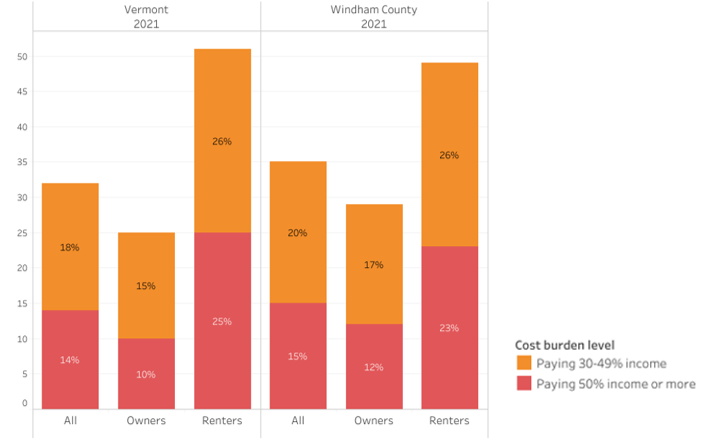
Housing costs have increased significantly since the last Regional Plan update when housing costs were still in decline. Home ownership costs began rising in 2015 after declining from 2007, as a result of the subprime mortgage “housing crisis.” In 2022, the median home price in Windham County was $260,000, which is an increase of 62% since 2015. There are many factors that have contributed to this including the disruptions of the COVID pandemic, which increased construction costs and competition to purchase homes as people were moving out of urban centers.
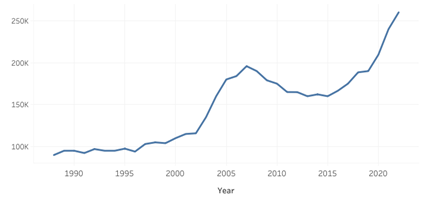
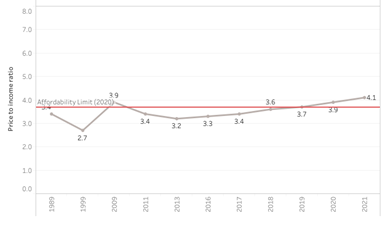
Wage increases have not kept pace with the increase of home prices. The chart to the right shows the 2020 affordability limit for Windham County in red and the actual price to income ratio in grey, which has been above the affordability limit since 2019. This ratio is based on Windham County’s median non-vacation home price compared to the county’s median household income. The “Affordability Limit” is the price-to-income ratio when it takes 30% of a household’s income to cover housing costs.
The median gross rent for a two-bedroom apartment in Windham County was $947 per month in 2021.[1] This is approximately a 21 percent increase in monthly rent from 2011. As of 2023, an annual income of $37,800 was needed for a one-bedroom apartment to be affordable and $46,000 for a two-bedroom apartment.[2] In 2021, 31% of Windham County residents had an annual income below $35,000.
In the Windham Region, housing that is maintained at a price level that is affordable to a variety of income levels is addressed through a number of local and regional programs. Windham and Windsor Housing Trust (WWHT) and Brattleboro Housing Partnerships develop and manage affordable housing that serves low and moderate income residents. WWHT provides loan funding for low and moderate income homeowners to maintain safe and affordable housing. They also provide grants to property owners to rehabilitate rental units and to develop new accessory dwelling units.
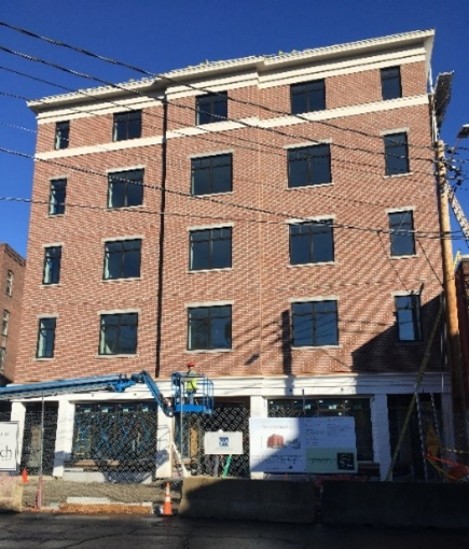
Housing subsidies come primarily from State and Federal programs. The largest federal housing subsidy, in terms of dollars, is the mortgage interest deduction. However, the mortgage interest deduction does not benefit low-income households or renter households. There are State and Federal programs specifically targeted at low and moderate income households. These include Housing Choice Vouchers, as well as the Vermont Community Development Program, Vermont Housing and Conservation Board, and US Department of Agriculture (USDA) Rural Development programs.
Related to housing affordability is homelessness, which continues to be a significant issue in the Windham Region. Although homelessness may have increased during the COVID pandemic due increasing housing costs and decreasing vacancies, housing was made available in the form of hotel rooms during the pandemic. The pandemic era housing program is ending, however, and it is yet to be seen how this will play out. Housing providers and homeless advocates are working with hotel residents to match them with housing but some individuals will end up back in shelters and other may be left out altogether. The primary shelter provider in the region is Groundworks, which operates two shelters in Brattleboro, as well as a drop-in center and a food shelf. Our Place Drop in Center also provides services to those experiencing homelessness in Bellows Falls.
